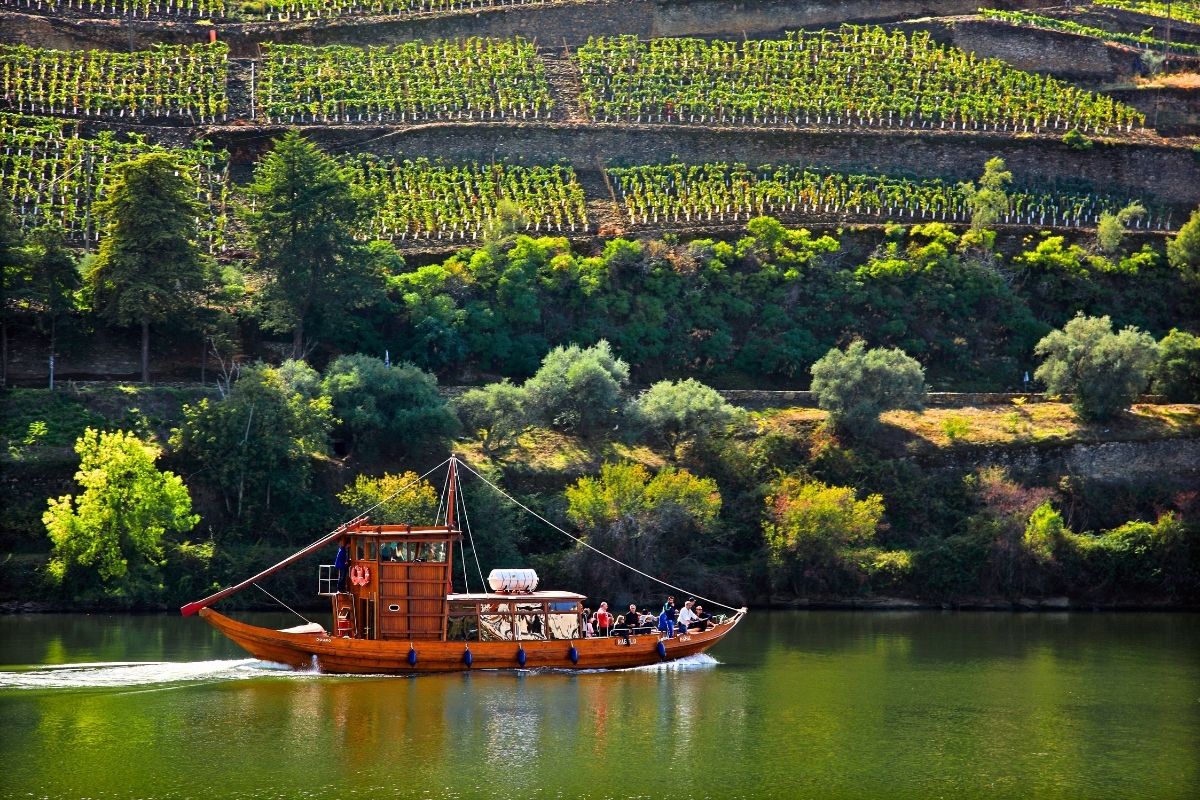The time has come for you to discover the best wine regions in Portugal, where every sip tells a story of tradition, terroir, and craftsmanship. From the steep terraces of the Douro Valley to the volcanic soils of the Azores, Portugal’s wine regions combine breathtaking scenery with unparalleled hospitality.
Across mainland Portugal and its islands, you’ll find vineyards dotting the landscape wherever you go. No matter if you’re visiting Porto in the north, Lisbon in the south, or the islands of Madeira and the Azores in the Atlantic, an impressive wine estate, or “quinta” as the Portuguese say, is only a short drive away.
If you’re looking for travel ideas and inspiration, you can browse through our extensive list of wine tours and tastings in Portugal. Otherwise, scroll down to learn more about the best wine regions in Portugal, including travel tips for each region and helpful information about the grapes and styles of wine you can find in each one.
1 – Douro Valley
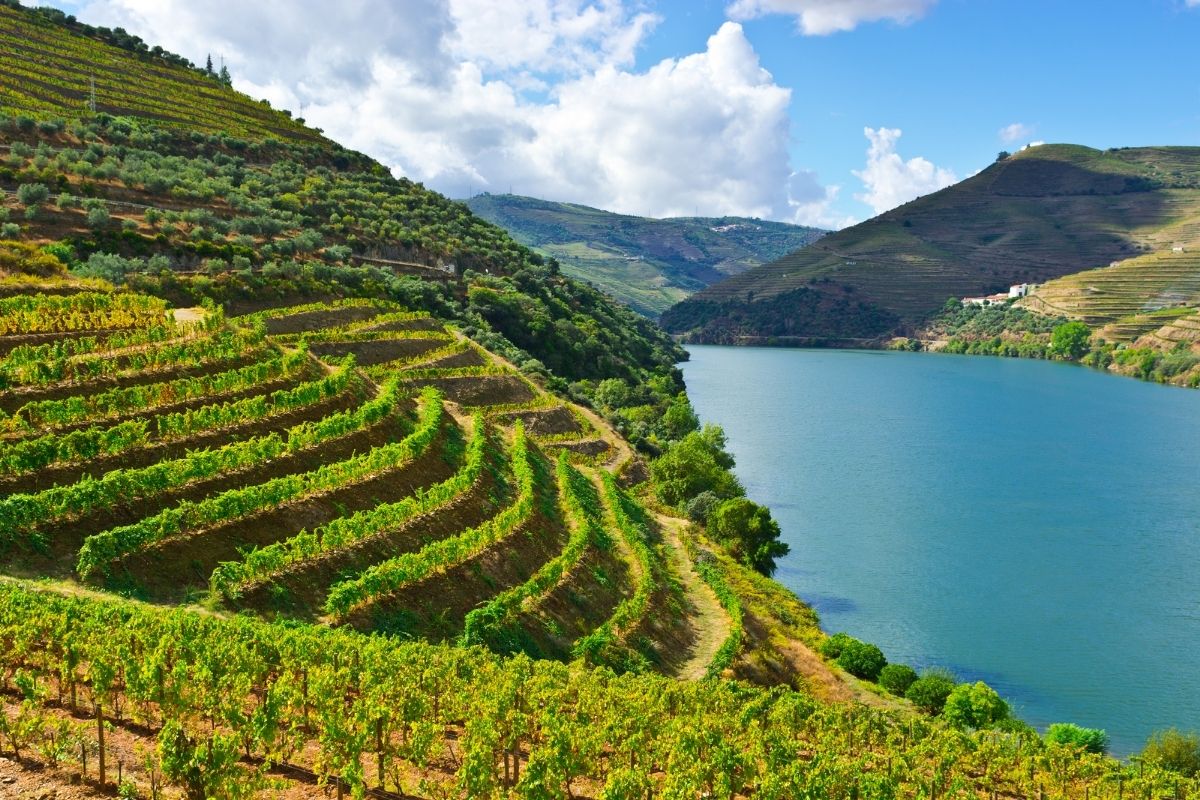
The Douro Valley, one of the oldest wine regions in the world, is renowned for its stunning terraced vineyards that line the Douro River. This UNESCO World Heritage site is the birthplace of Port wine and has been producing wine for over 2,000 years. The region’s unique microclimate and schistose soil contribute to the distinctive character of its wines.
Main Grape Varieties
The Douro Valley has over 100 indigenous grape varieties. However, the most popular are Touriga Nacional, Touriga Franca, Tinta Roriz (known as Tempranillo in Spain), Tinta Barroca, and Tinta Cão. These varieties are primarily used in the production of Port and still red wines.
Typical Wine Styles
The Douro Valley is famous for its rich and complex Port wines, including white, ruby and tawny styles — not to mention the legendary Vintage Port. In recent years, there has been a significant rise in the production of high-quality, non-fortified, red and white Douro wines.
Popular Quintas
- Quinta do Noval: Famous for its Nacional vintage port, produced from a single vineyard.
- Quinta do Crasto: Known for its old vine wines and spectacular views over the Douro.
- Quinta do Bomfim: Where the Symington family produces Dow’s Port in Pinhão
- Quinta de La Rosa: A boutique winery with high-quality Ports and table wines.
- Quinta do Vallado: Established in 1716, it blends traditional and modern winemaking.
Visiting the Douro Valley Wine Region
The Douro Valley is located around 100 kilometers east of Porto, Portugal’s second-largest city. The region is accessible by car, train, or boat, offering breathtaking scenic views along the journey.
In 2016, Portugal’s largest tunnel was constructed through the Douro mountains, which significantly reduced driving time from Porto to the heart of the Douro River Valley (from 3 hours to about 90 minutes). This has made day trips to the Douro Valley from Porto much more convenient and accessible.
Visiting the Port Wine Cellars in Vila Nova de Gaia
Even though producers grow the grapes for Port wine in the Douro Valley, the majority of them transport their wine for aging to Vila Nova de Gaia, which is just across the river from Porto. During your stay in the city, there are lots of wine tours and tastings in Porto to enjoy.
There are over a dozen Port wine cellars in Vila Nova de Gaia that offer visits and tastings. If you feel overwhelmed by so many choices, check out our list of the 13 best Port wine cellars in Porto to help you decide where to go. You can also refer to the 20 best wine tours and tastings for options both inside and outside the city.
2 – Vinho Verde
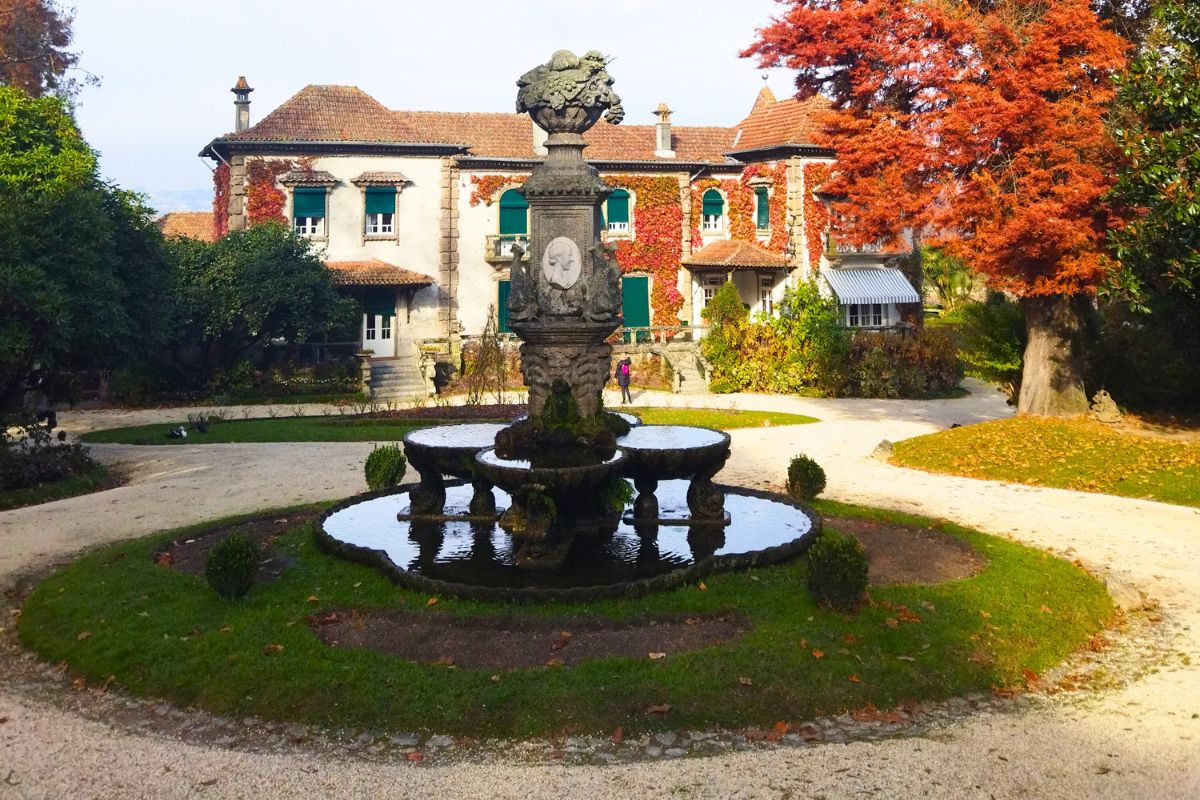
Vinho Verde, translating to “green wine,” refers to the youthful wines produced in the northwest of Portugal. This region is characterized by its lush, verdant landscape, high rainfall, and cool temperatures, which are ideal for producing its signature light and refreshing wines.
Main Grape Varieties
Alvarinho, Loureiro, Trajadura, and Arinto are among the main white grape varieties, while Vinhão, Espadeiro, and Amaral are key red grape varieties. Alvarinho is particularly celebrated in the sub-region of Monção and Melgaço.
Typical Wine Styles
Vinho Verde is best known for its slightly effervescent, light-bodied white wines with vibrant acidity and fresh, floral, and fruity flavors. Rosé and red Vinho Verde are also produced but are less commonly exported.
Popular Quintas
- Quinta do Ameal: Specializes in Loureiro and is known for its elegant, expressive wines.
- Quinta de Soalheiro: Pioneers of Alvarinho in Monção and Melgaço, producing distinct wines.
- Casa de Sezim: Renowned for its vibrant and aromatic Vinho Verde wines.
- Quinta da Aveleda: Famous for its floral and fruity Vinho Verde wines.
- Quinta de Covela: In Baião overlooking the Douro, known for reviving the Avesso grape
Visiting the Vinho Verde Wine Region
Vinho Verde is situated in the Minho region, just north of Porto. It is easily accessible from Portugal’s second city, offering a cooler climate and lush landscapes for visitors. You can reach most quintas in the Vinho Verde Wine region by car in less than an hour.
Day trips to Minho from Porto will often include a stop at a winery. However, the focus of these tours is normally visiting scenic towns such as Ponte de Lima, Viana de Castelo and Valença. Some tours venture even further to Braga or cross the border into Spain for a visit to Santiago de Compostela. Minho tours start at €80 per person for a group tour and €195 per person for a private tour.
3 – Dão
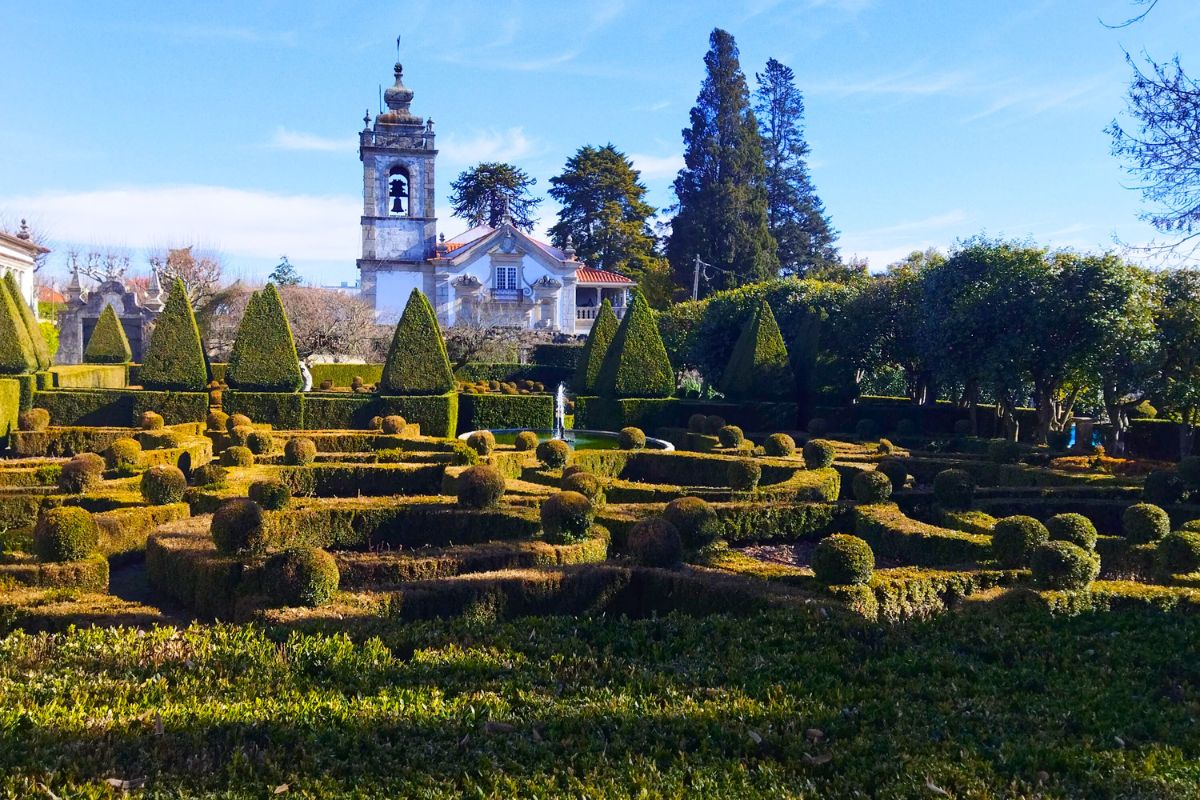
Nestled in north-central Portugal, the Dão region is sheltered by mountain ranges on three sides, creating a temperate climate ideal for winemaking. It has a long history of viticulture dating back to Roman times, with a focus on high-quality, terroir-driven wines.
Main Grape Varieties
Touriga Nacional is the flagship red grape, producing full-bodied and complex wines. Tinta Roriz, Alfrocheiro, and Jaen are also important red varieties. Encruzado is the leading white grape variety, known for its aromatic and structured wines.
Typical Wine Styles
Dão is renowned for its elegant and structured red wines with great aging potential. White wines from Dão are also gaining recognition for their freshness, minerality, and complexity.
Popular Quintas
- Santar Vila Jardim: The Santar family’s villa and gardens allow you to fully appreciate the Dão’s terrior
- Quinta dos Roques: A leader in the region, known for its expressive Touriga Nacional.
- Quinta da Pellada: Highly regarded for both its reds and whites, focusing on traditional varieties.
- Quinta de Lemos: Produces premium wines, emphasizing Dão’s unique terroir.
- Quinta das Marias: Offers a range of sophisticated wines, showcasing the best of Dão’s varietals.
- Quinta do Perdigão: Renowned for its organic wines with distinctive character.
Visiting the Dão Wine Region
Dão is located near the city of Viseu, roughly in the center of Portugal. The region’s mountainous terrain and historical sites make it a fascinating destination for wine enthusiasts.
4 – Bairrada
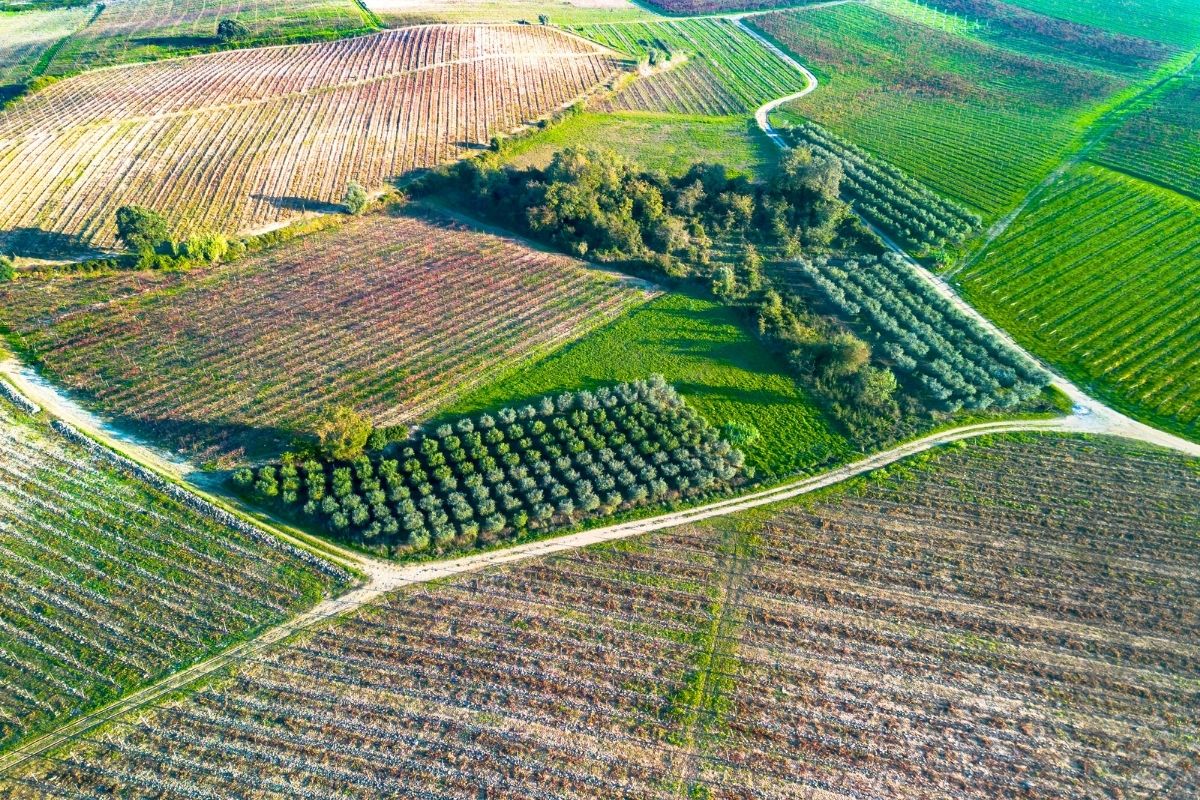
Bairrada, located in central Portugal, is known for its fertile clay-limestone soils and Atlantic-influenced climate. The region has a long winemaking tradition, especially famous for its sparkling wines and robust reds.
Main Grape Varieties
Baga, the Portuguese word for “berry,” is the dominant red grape variety, known for its deep color and high tannins. Other important varieties include Touriga Nacional, Tinta Roriz, and Castelão for reds, and Bical, Cercial, and Maria Gomes for whites.
Typical Wine Styles
Bairrada is renowned for its full-bodied and tannic red wines, particularly those made from Baga. The region also produces high-quality sparkling wines using the traditional method and fresh, aromatic whites.
Popular Quintas
- Quinta das Bágeiras: A reference for traditional Baga wines and sparkling wines.
- Luis Pato: An innovative winemaker known for modern interpretations of Baga.
- Quinta do Encontro: Offers a modern take on Bairrada wines, including sparkling and still varieties.
- Caves São João: A historic winery producing a range of Bairrada wines and sparkling.
- Quinta de Baixo: Focuses on biodynamic practices, producing elegant and pure expressions of Baga.
Visiting the Bairrada Wine Region
Bairrada is conveniently located between Porto and Coimbra, making it easily accessible for visitors looking to explore its vineyards and sample the unique wines of the region.
5 – Tras-Os-Montes
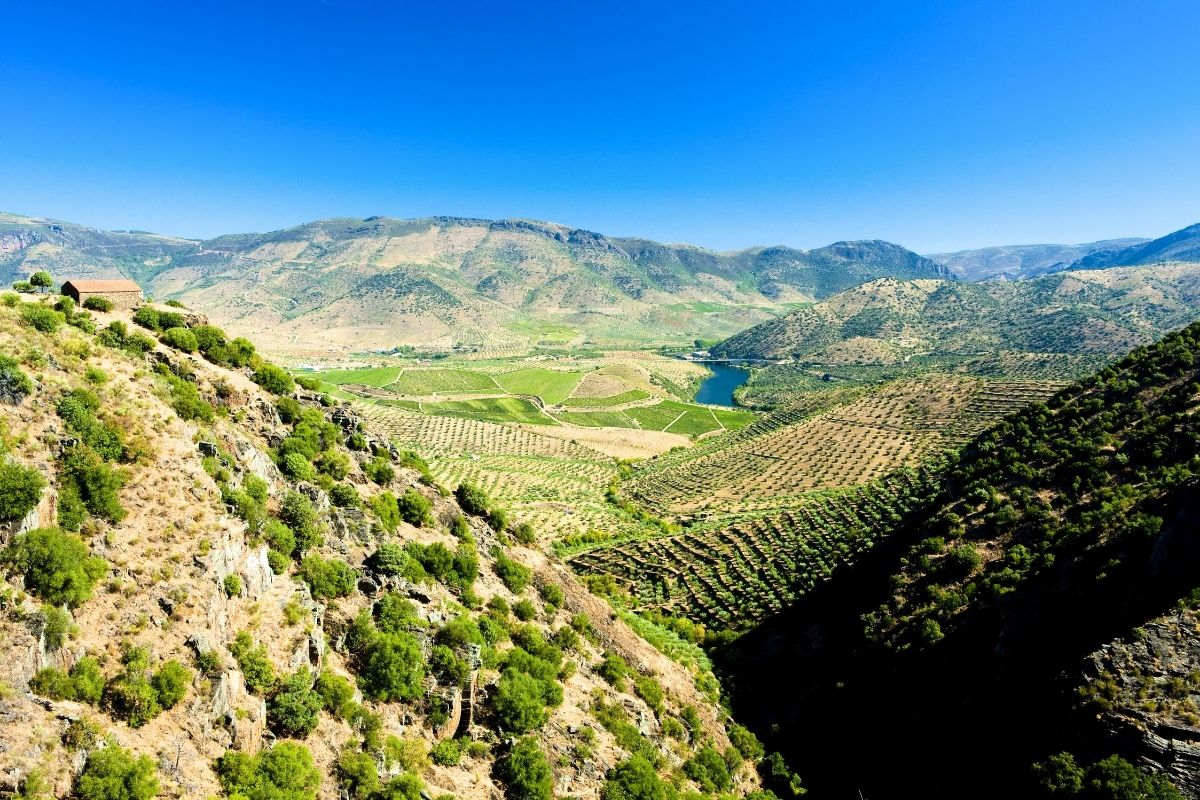
Trás-os-Montes, translating to “behind the mountains,” is a remote and rugged wine region in the northeastern corner of Portugal. Its high altitude and continental climate contribute to the distinctive character of its wines, which are produced in small quantities but are gaining in reputation.
Main Grape Varieties
Red varieties include Tinta Roriz, Touriga Nacional, and Trincadeira, while white varieties feature Malvasia Fina, Gouveio, and Viosinho. These grapes are well adapted to the region’s climatic conditions, producing wines with high acidity and unique flavors.
Typical Wine Styles
The region is known for its robust and aromatic red wines that often possess a unique mineral quality. Whites are typically fresh, floral, and vibrant, reflecting the high-altitude terroir of Trás-os-Montes.
Popular Quintas
- Quinta do Vale Meão: One of the most prestigious wineries in Portugal, known for its powerful and complex reds.
- Quinta de Arcossó: Produces limited quantities of high-quality wines using sustainable practices.
- Quinta do Tedo: Terraced vineyards nestled between the Douro and Tedo rivers.
- Quinta da Terrincha: Offers accommodation in villas and a hotel amongst the vines.
- Caves Transmontanas: Specializes in Vértice sparkling wines, using traditional grape varieties.
Visiting the Tras-Os-Montes Wine Region
Trás-os-Montes is located far from Portugal’s major urban centers, offering a secluded and authentic wine tourism experience. The region can be accessed from the city of Porto, although it requires a longer journey into the heart of northern Portugal’s countryside.
If you want to visit wineries in Tras-Os-Montes, your best bet is to find accommodation there or in the Douro Valley for at least a few days, but a week-long visit would be best as there truly are so many quintas to visit and so many beautiful lookout points.
6 – Távora-Varosa
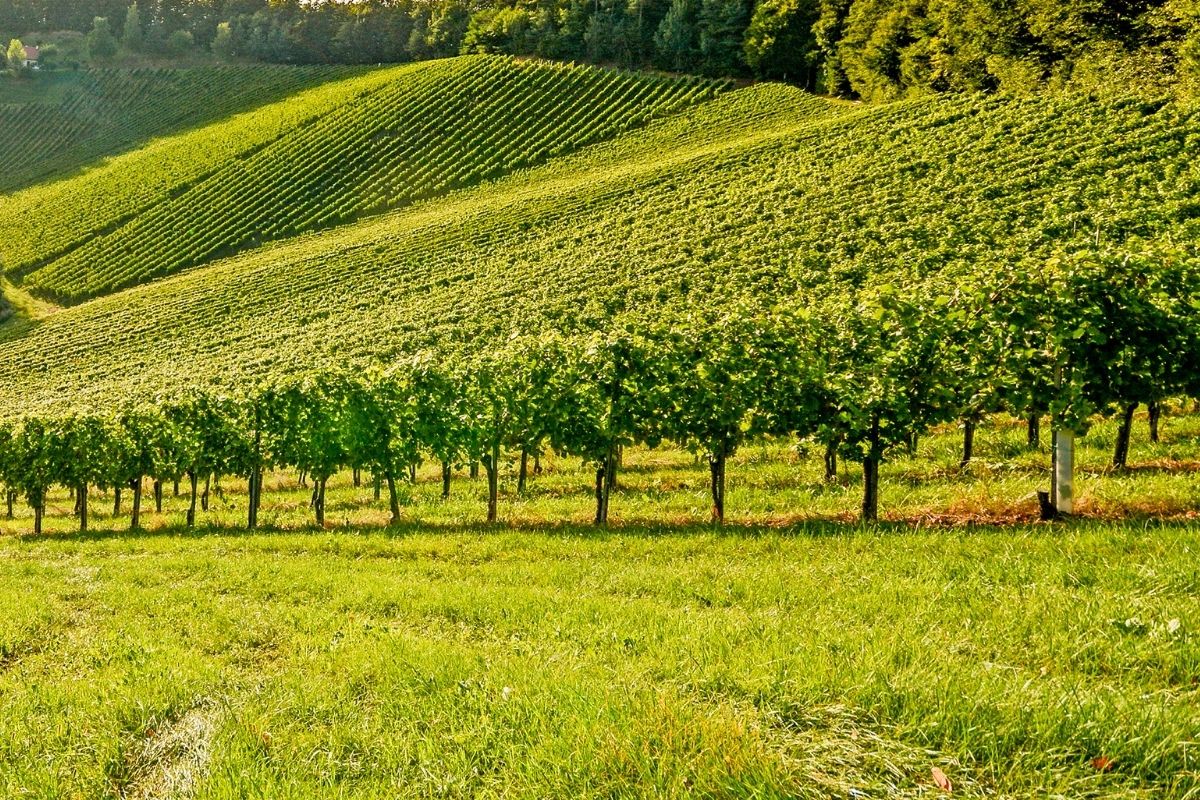
Távora-Varosa is a small, high-altitude wine region in north-central Portugal, known for its cool climate and granite soils. It is one of Portugal’s prime regions for the production of sparkling wine, with a viticultural history that dates back to the 12th century.
Main Grape Varieties
The region primarily grows Malvasia Fina, Cerceal, Gouveio for white wines, and Tinta Roriz, Touriga Franca, and Tinta Barroca for reds. These varieties thrive in the cool climate, contributing to the high acidity and freshness of the wines.
Typical Wine Styles
Távora-Varosa is best known for its high-quality sparkling wines made using the traditional method. Still white and red wines are also produced, characterized by their elegance, acidity, and minerality.
Popular Quintas
- Murganheira: Renowned for its exceptional traditional method sparkling wines.
- Quinta da Pacheca: Also known for its Douro wines, it produces fine sparkling wines in Távora-Varosa.
- Casa de Vinhago: Noted for its dedication to quality in both still and sparkling wines.
- Caves Raposeira: Produces a range of wines, including acclaimed sparkling wines.
Visiting the Távora-Varosa Wine Region
Located between the Douro Valley and the Dão region, Távora-Varosa is easily accessible from Viseu or Lamego, offering a unique opportunity to explore Portugal’s sparkling wine production in a serene setting.
7 – Beira Interior
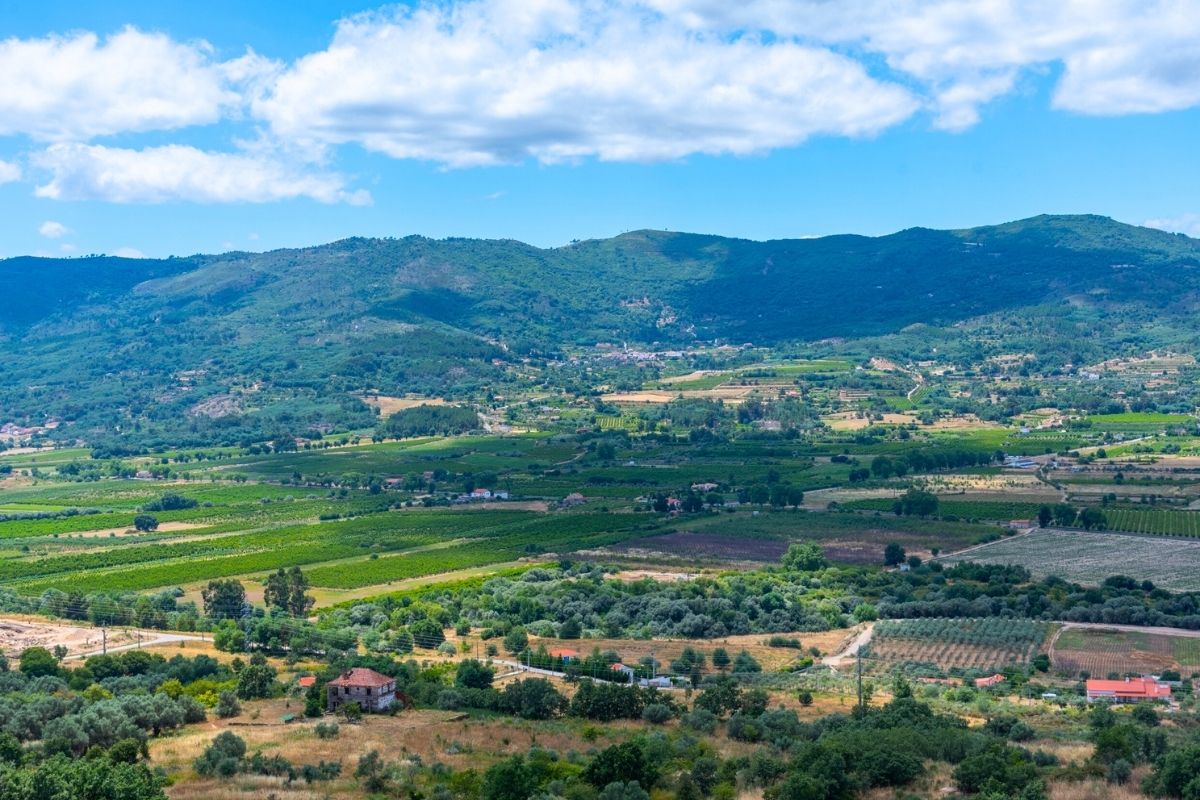
The Beira Interior wine region is located in the eastern part of Portugal, bordering Spain. It is characterized by its rugged terrain, high altitude, and continental climate, which contribute to the distinct quality of its wines. The region has a long history of viticulture, with evidence of wine production dating back to Roman times.
Main Grape Varieties
Síria (also known as Roupeiro) is the predominant white grape variety, while red wines are primarily made from Rufete, Touriga Nacional, and Tinta Roriz. These varieties are well adapted to the extreme climatic conditions of the region, producing wines with strong character.
Typical Wine Styles
Beira Interior is known for its aromatic and structured white wines, as well as its robust and complex reds. The region also produces some rosé and sparkling wines, although these are less common.
Popular Quintas
- Quinta do Cardo: Known for its focus on indigenous varieties and organic viticulture.
- Quinta da Alameda: Renowned for its elegant and complex wines, made from traditional grape varieties.
- Adega Cooperativa de Pinhel: A cooperative winery that plays a significant role in the region’s wine production.
- Casas Altas: Focuses on high-quality wines that showcase the potential of Beira Interior’s terroir.
- Quinta dos Currais: Produces a range of wines that reflect the unique terroir of Beira Interior.
Visiting the Beira Interior Wine Region
Beira Interior is located to the east of the Serra da Estrela mountain range, making it somewhat remote but accessible for those interested in exploring the interior of Portugal. The nearest major city is Guarda, which serves as a gateway to the region.
8 – Lisboa
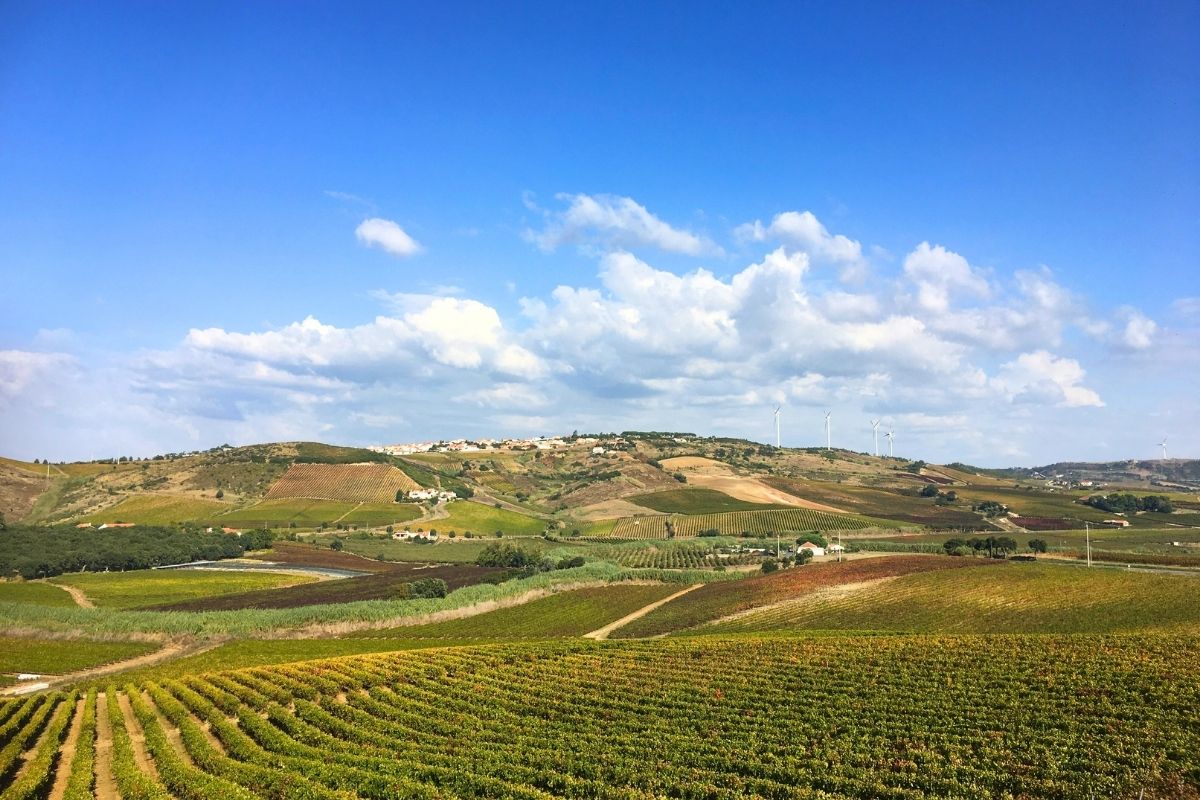
The Lisboa wine region, formerly known as Estremadura, stretches north from the capital city of Lisbon along the coast. Its diverse climate, influenced by the Atlantic Ocean, allows for a wide range of wine styles. The region has a rich winemaking history, with vineyards dating back to Roman times.
Main Grape Varieties
Lisboa is known for many different grape varieties, including Touriga Nacional, Tinta Roriz, and Castelão for reds, and Arinto, Fernão Pires, and Malvasia for whites.
Typical Wine Styles
The region produces a broad spectrum of wine styles, from light, fresh, and mineral-driven whites to full-bodied and fruity reds. Lisboa is also known for its fortified wines and traditional method sparkling wines.
Popular Quintas
- Quinta de Sant’Ana: A small, family-run estate producing high-quality, handcrafted wines.
- Quinta do Monte d’Oiro: Known for its Syrah-led wines, reflecting a combination of traditional and innovative winemaking.
- Quinta da Chocapalha: Produces a wide range of wines that highlight the diversity of the Lisboa region.
- Manzwine: Focuses on small production, high-quality wines, including some from ancient vineyards.
- AdegaMãe: Inspired by the Atlantic Ocean, it produces wines characterized by their freshness and minerality.
Visiting the Lisboa Wine Region
Lisboa’s wine region is easily accessible from the capital, with many wineries located within an hour’s drive from Lisbon. Its proximity to the coast also offers you the chance to combine wine tasting with beach visits.
You can refer to our catalog of wine tastings and tours in Lisbon to find the best option for you. From a Fado show paired with Port wine for €20 to a walking food and wine tour of the city for €60, you don’t have to leave Lisbon to taste its wines. However, if you’re looking to be among the vineyards, there are many day trips not only to the Lisboa Wine Region but also to Alentejo and Setúbal.
Read more: Fun & Unusual Things to Do in Lisbon, Portugal
9 – Alentejo
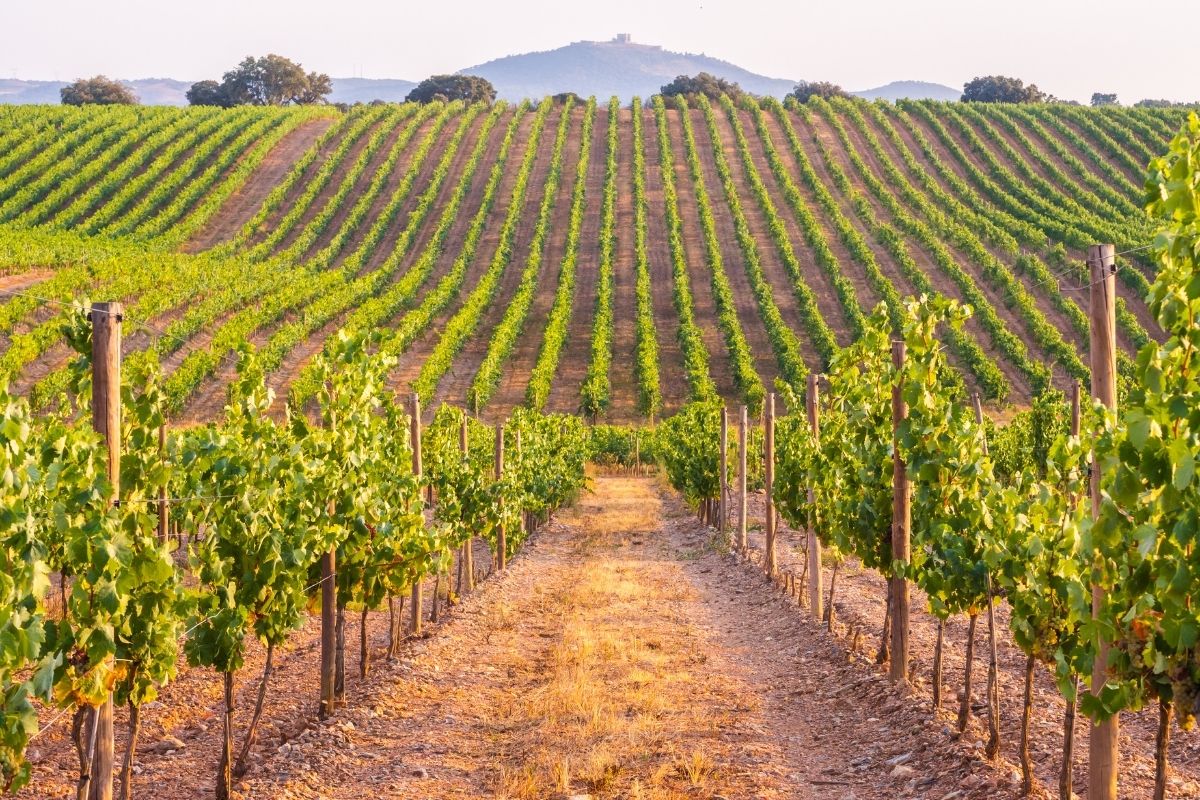
The Alentejo wine region, covering a large swath of southern Portugal, is known for its rolling hills, vast plains, and hot, dry climate. Wine production in Alentejo dates back to ancient times, but it has seen a significant resurgence in quality and international recognition in recent decades. The region’s terroir, characterized by its schist and granite soils, contributes to the production of rich and aromatic wines.
Main Grape Varieties
Alentejo is home to a variety of indigenous grape varieties, including reds such as Alicante Bouschet, Aragonez (Tempranillo), Trincadeira, and Touriga Nacional, and whites such as Antão Vaz, Arinto, and Roupeiro.
Typical Wine Styles
The Alentejo region is best known for its full-bodied and aromatic red wines, which often feature ripe fruit flavors and smooth tannins. The whites are typically fresh, aromatic, and well-balanced. The region also produces some excellent rosé wines.
Popular Quintas
- Herdade do Esporão: One of Alentejo’s most well-known wineries, offering a range of high-quality wines.
- Herdade da Malhadinha Nova: A family-run estate known for its innovative and premium wines.
- Quinta da Fonte Souto: Offers picnics and bicycle rides through the vineyards.
- Herdade dos Grous: Known for its rich and complex reds and serene wine tourism experiences.
- Herdade do Sobroso: Combines wine production with a love for the Alentejo landscape, offering memorable wines and hospitality.
Visiting the Alentejo Wine Region
The Alentejo region is vast and spans several sub-regions, but it is generally accessible from Lisbon, the capital of Portugal, within a couple of hours’ drive east towards the Spanish border. The region’s vast landscapes, historic towns, and warm hospitality make it a favorite destination for wine lovers.
On a day trip from Lisbon to Alentejo, you can experience why Alentejo is not only known for its wine but also its hearty dishes and olive oil. Most offers combine winery visits with a tour of Évora — the ancient capital of Alentejo known for its Roman temple and Chapel of Bones. Alentejo group tours start at about €80, while private tours will cost about €200 per person, depending on the group size.
10 – Setúbal
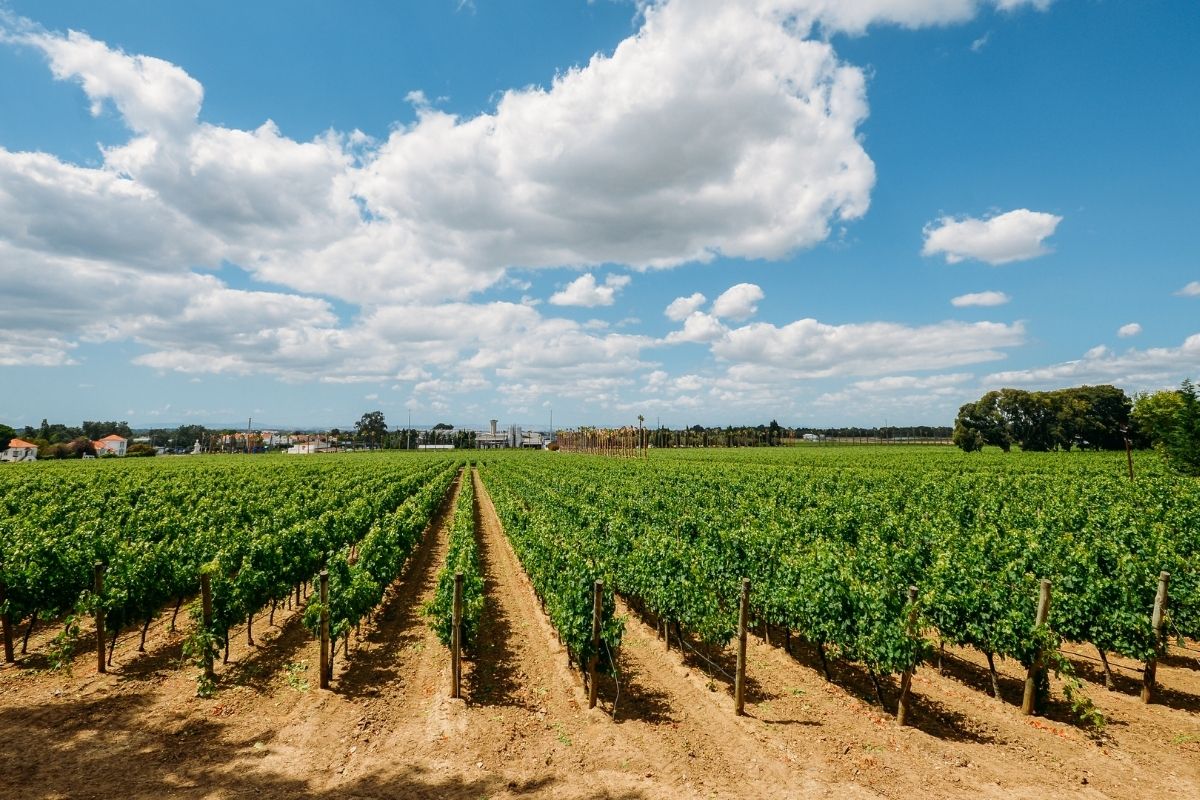
The Setúbal Peninsula, located just south of Lisbon, is famous for its Muscatel wines. The region enjoys a warm climate moderated by the Atlantic Ocean and the Sado River, creating ideal conditions for viticulture. The history of winemaking in Setúbal dates back to the ancient Greeks and Phoenicians.
Main Grape Varieties
Muscat of Alexandria (Moscatel de Setúbal) is the flagship grape variety, known for its sweet fortified wines. Other varieties include Castelão and Aragonez for red wines, and Arinto and Fernão Pires for whites.
Typical Wine Styles
Setúbal is renowned for its sweet, fortified Muscatel wines, which are rich, aromatic, and complex. The region also produces high-quality red and white still wines, characterized by their fruitiness and balance.
Popular Quintas
- José Maria da Fonseca: A historic family-owned winery that is a leading producer of Muscatel.
- Quinta da Bacalhôa: Known for its innovative wines and beautiful palace and gardens.
- Casa Ermelinda Freitas: Focuses on quality and tradition, producing award-winning wines.
- Horácio Simões: A family winery specializing in traditional Muscatel wines.
- Quinta do Piloto: Offers a range of wines, including highly regarded Muscatel and still wines.
Visiting the Setúbal Wine Region
The Setúbal Peninsula is easily accessible from Lisbon, offering a scenic escape with its beautiful landscapes, historic wineries, and the charming city of Setúbal, known for its gastronomy and seaside attractions.
There are many day trips from Lisbon to Arrábida Natural Park that combine winery visits in the Setúbal wine region with outdoor activities, like kayaking or snorkeling. Popular full-day wine and food tours start at €70 and there are private tours for as low as €160 per person.
11 – Algarve
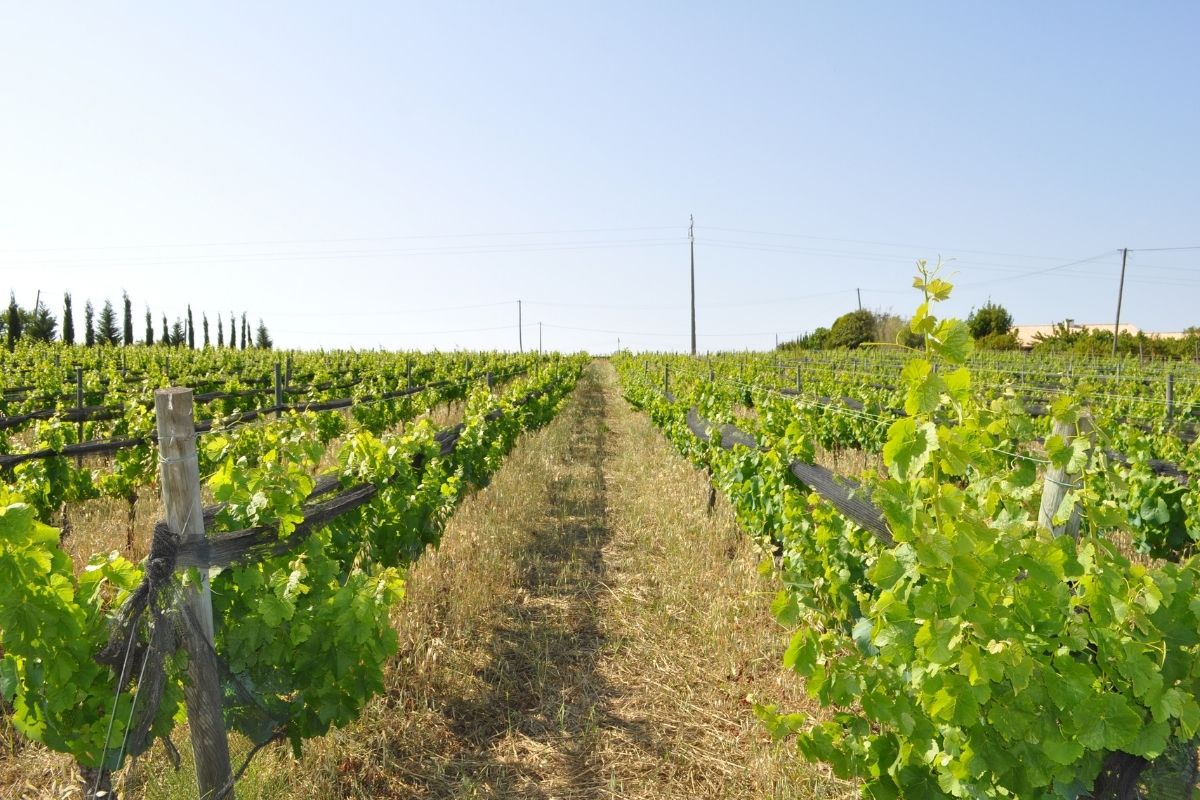
The Algarve, mainland Portugal’s southernmost wine region, is best known for its stunning beaches, but its winemaking tradition is also noteworthy. The warm Mediterranean climate and diverse soils, from limestone in the west to schist in the east, are conducive to viticulture. Wine production in the Algarve has been revitalized in recent years, focusing on quality and regional character.
Main Grape Varieties
The region’s vineyards are planted with a mix of indigenous and international varieties, including Syrah, Aragonez (Tempranillo), Trincadeira, and Alicante Bouschet for reds, and Arinto, Alvarinho, and Viognier for whites.
Typical Wine Styles
Algarve wines are known for their fruit-forward character, with reds being full-bodied and rich, and whites being aromatic and fresh. The region also produces some rosé wines, which are perfect for its sunny climate.
Popular Quintas
- Quinta da Tôr: A family-owned winery in Loulé with tastings and tours
- Quinta dos Vales: A leading wine estate in the Algarve, known for its quality wines and art sculptures.
- Adega do Cantor: Co-owned by singer Sir Cliff Richard, it produces popular wines under the Vida Nova label.
- Quinta de Morgado da Torre: Renowned for its Alvarinho and other high-quality white wines.
- Monte da Casteleja: Focuses on organic viticulture, offering distinctive wines that reflect the region’s uniqueness.
Visiting the Algarve Wine Region
The Algarve is well-known for its tourist attractions, with wine tourism becoming an increasingly popular activity. The region is accessible from Faro, the Algarve’s capital, and offers a variety of wine-related experiences, from tastings to vineyard tours.
Hot tip: Check out our complete selection of fun things to do in Faro.
Most wine tasting tours in the Algarve depart from either Albufeira or Lagos. If you have your own transport, you can do wine tastings and tours for around €20. Wine tours, including roundtrip transport, only cost about €60 per person for a group tour and €130 per person for a private tour.
12 – Tejo
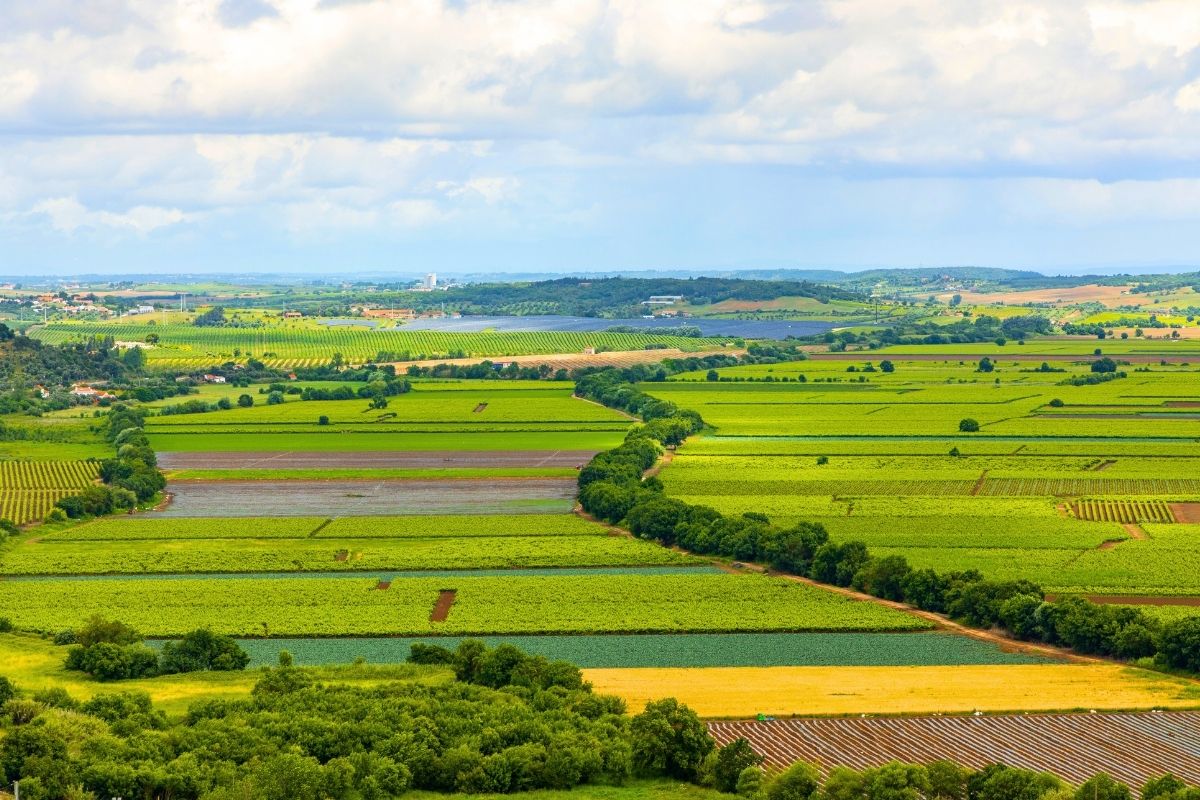
The Tejo region, named after the Tagus River that flows through it, is located east of the Lisboa wine region. Its fertile river valley has been the site of vine cultivation since Roman times. The region benefits from a temperate climate, with significant temperature variations between day and night, which helps to retain acidity and develop complex flavors in the grapes.
Main Grape Varieties
Tejo is known for both indigenous and international grape varieties, with reds including Touriga Nacional, Castelão, and Trincadeira, and whites such as Fernão Pires, Arinto, and Verdelho.
Typical Wine Styles
The region produces a diverse range of wines, from light and fruity whites to full-bodied and structured reds. Tejo is also known for its value-for-money wines, offering excellent quality at competitive prices.
Popular Quintas
- Quinta da Alorna: Famous for its elegant and expressive wines, with a history dating back to the 18th century.
- Quinta do Casal Branco: Produces a wide array of wines, emphasizing the unique terroir of the Tejo region.
- Quinta do Casal Monteiro: Known for its high-quality wines that reflect the diversity of the Tejo terroir.
- Quinta da Lagoalva de Cima: Offers a range of premium wines, combining tradition with modern winemaking techniques.
- Wines of Tejo: A collaborative project that showcases the best of Tejo’s wines from various producers.
Visiting the Tejo Wine Region
The Tejo wine region is located just an hour’s drive from Lisbon, making it an accessible destination for those looking to explore the rich viticultural heritage of central Portugal.
13 – Madeira
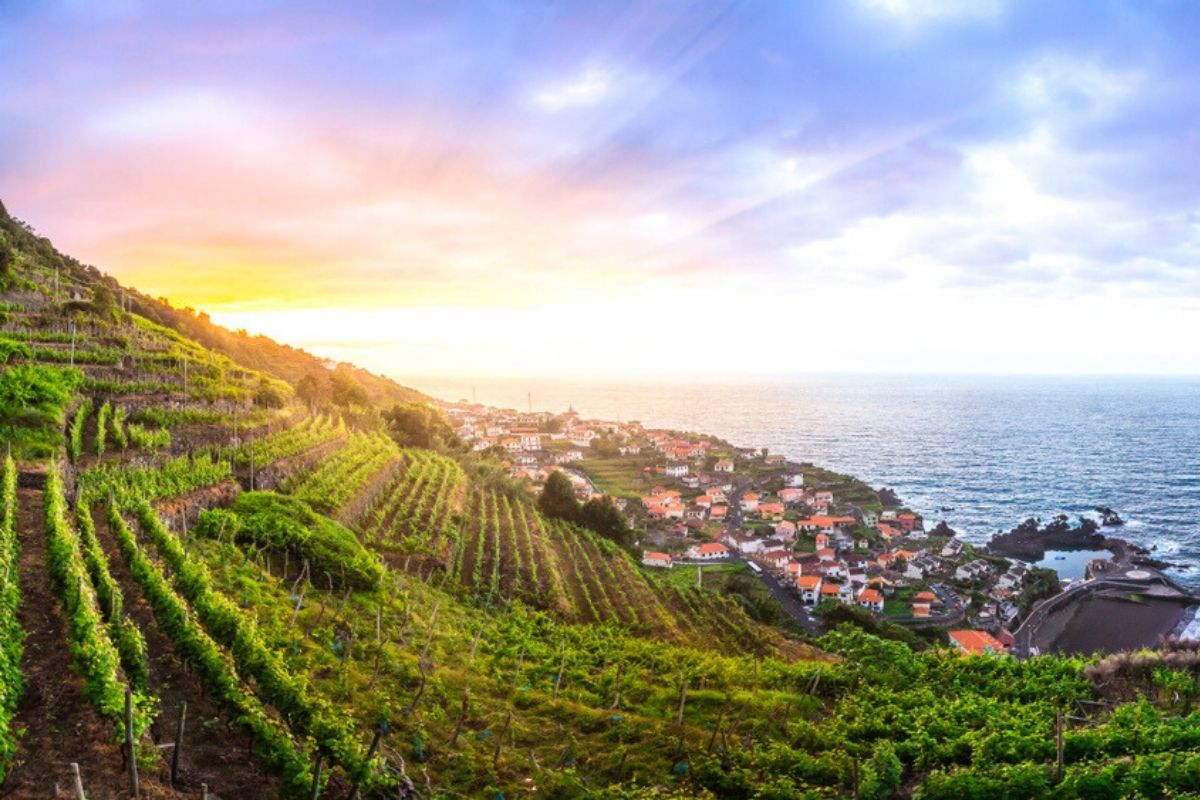
The Madeira archipelago, located in the Atlantic Ocean southwest of Portugal, has a long history of winemaking dating back to the 15th century. The island’s volcanic soils and subtropical climate create a unique environment for viticulture.
Madeira wine, a fortified wine, is celebrated for its extraordinary longevity and complex flavors. A favorite among Thomas Jefferson and the founding fathers, Madeira wine was present during the signing of the Declaration of Independence.
Main Grape Varieties
Sercial, Verdelho, Bual (Boal), and Malvasia (Malmsey) are the primary grape varieties used in the production of Madeira wine, each contributing to the different styles of sweetness in the wine.
Typical Wine Styles
Madeira wines range from dry to very sweet, known for their high acidity and distinctive nutty, caramel, and stewed fruit flavors. The unique estufagem aging process contributes to Madeira’s unparalleled depth and longevity.
Popular Wine Lodges
- Blandy’s: One of the oldest and most prestigious Madeira producers, offering a wide range of styles.
- Henriques & Henriques: Known for its comprehensive selection of aged single varietal Madeiras.
- Barbeito: A producer that combines traditional and modern techniques to create distinct Madeira wines.
- D’Oliveiras: Has a reputation for aging and bottling remarkable vintage Madeiras.
- Justino’s Madeira: Offers a variety of quality Madeira wines, from dry to sweet styles.
Visiting the Madeira Wine Region
Madeira is accessible via flights to Funchal, the capital city. The island offers a rich wine tourism experience, with opportunities to visit historic wine lodges, taste diverse styles of Madeira wine, and explore the stunning landscapes of the island.
Hot tip: Check out our complete list of fun things to do in Madeira.
You can combine your wine tasting tour in Madeira with other experiences, such as a food tour, the Cabo Girão Skywalk and a 4X4 Jeep tour. Combo tours with wine tasting, a Jeep ride and the Skywalk start at €40. Food and wine tours in Funchal cost about €80, while a full-day Madeira wine tour with lunch will be about €175.
14 – Azores
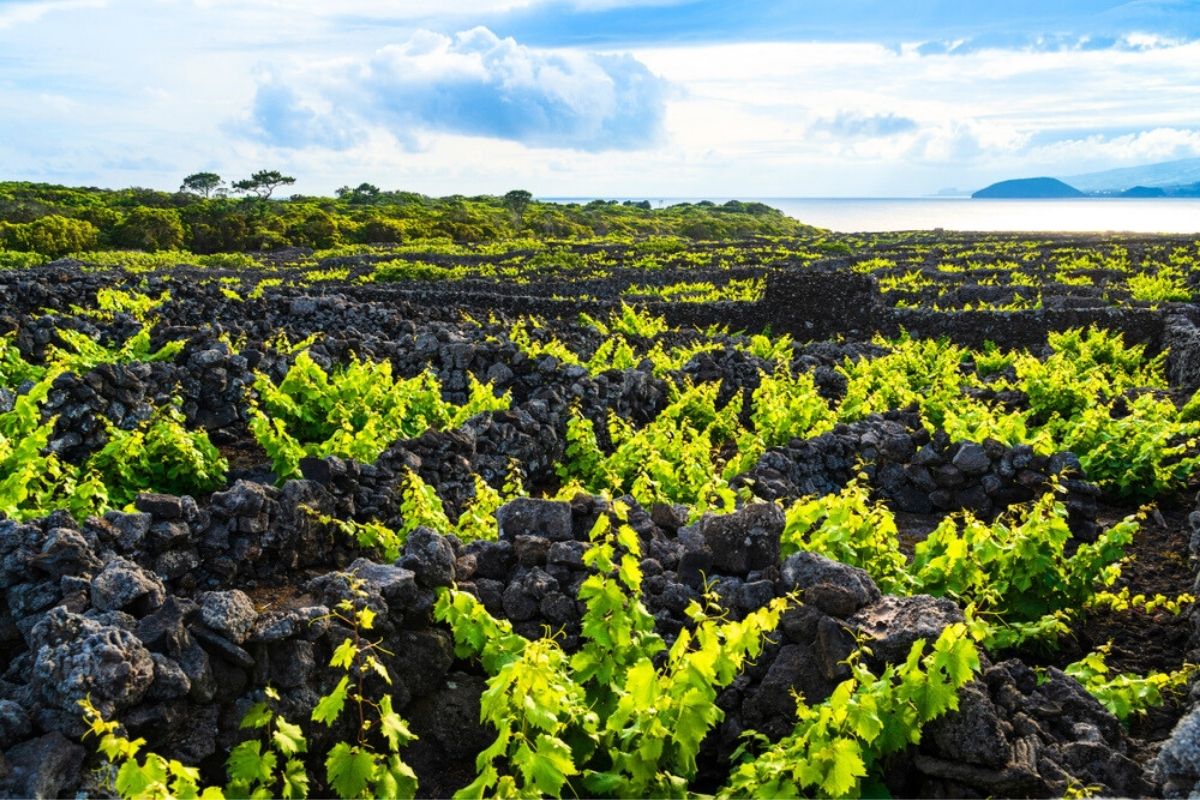
The Azores, a remote archipelago located in the middle of the Atlantic Ocean, is known for its dramatic landscapes, volcanic soil, and maritime climate. The wine tradition on the islands, especially on Pico Island, is highlighted by the UNESCO World Heritage-listed vineyard landscapes, where vines are grown in unique basaltic rock enclosures.
Main Grape Varieties
Verdelho is the most historically significant grape variety, along with other indigenous varieties like Arinto dos Açores and Terrantez do Pico. These grapes are well-suited to the Azores’ climatic conditions, producing distinctive and high-quality wines.
Typical Wine Styles
The Azores produce a range of wine styles, from crisp, aromatic whites to intriguing and complex reds. The region is also known for its fortified and dessert wines, which are less common but highly valued for their unique flavors.
Popular Quintas
- Adega Cooperativa da Ilha do Pico: Produces a range of wines that reflect the unique terroir of Pico Island.
- Azores Wine Company: Known for its innovative approach to winemaking and focus on indigenous grape varieties.
- Herdade do Ananás: Offers accommodation and specializes in pineapple wine tasting.
- Quinta da Jardinete: Focuses on small-batch, high-quality wines, highlighting the Azores’ unique viticultural environment.
Visiting the Azores Wine Region
The Azores are accessible by plane from mainland Portugal and other international destinations. Wine tourism in the Azores offers a unique opportunity to explore the stunning natural beauty of the islands, experience the traditional vineyard landscapes, and taste the distinctive wines produced in this remote part of the world.
Most wine tasting tours in the Azores require travel from the main island of São Miguel to one of the smaller islands, such as Pico and Terceira. Once you’re on the island, you can enjoy winery visits for around €40 or full-day tours at the €120 price range.
Read more: Don’t miss our list of fun things to do in the Azores.
How to Book a Wine Tasting Tour in Portugal?
Now that you know more about the best wine regions in Portugal, it’s time to choose which ones you want to visit. With so many options available, wouldn’t it be helpful to have a catalog to search and compare all the wine tastings and tours in Portugal? Fortunately, TourScanner is here to help with that. Browse our selection of tours and travel activities to find the best fit for you!
Compare wine tours in Portugal
Portuguese winemakers are known for their warm hospitality, often personally guiding visitors through the winemaking process, from the vineyard to the glass. This personal touch, combined with the scenic beauty of vineyards often set against dramatic landscapes, makes wine tours in Portugal not just a tasting adventure, but a profound cultural and sensory experience.
Whether you’re meandering through the historic quintas of the Douro Valley, savoring the refreshing Vinho Verde, or discovering the unique fortified wines of Madeira, Portugal’s wine regions offer a rich tapestry of flavors, aromas, and stories waiting to be discovered.
So, raise your glass and let Portugal’s best wine regions lead you on an unforgettable journey through one of the world’s most celebrated wine countries.


